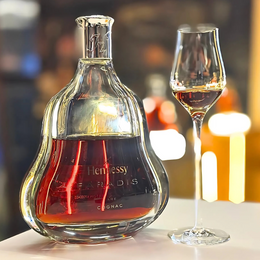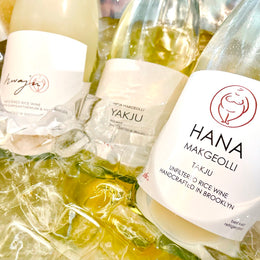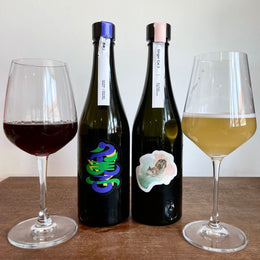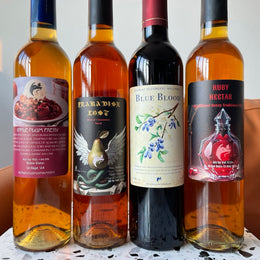
Kuro Kirishima is one of the most popular Shochu's on the market and you can pretty much find it anywhere, or at least in any Japanese store. And is actually just one of three Imo Shochu (Sweet Potato Shochy) expressions from Kirishima, with the other two being Shiro Kirishima (or White Kirishima), Aka Kirishima (or Red Kirishima), along with the Kuro Kirishima (or Black Kirishima), with the Kuro using black koji, the Shiro using white koji, and the Aka using a special purple Murasaki-Masari sweet potato.
Kirishima itself is a pioneer in the Shochu industry, and is credited with coining the term Honkaku Shochu to mean authentic Shochu, where no sugar or artificial flavourings are added to the Shochu, and is therefore purely derived from the fermentation and distillation of the base material, for example sweet potato (Imo), barley (Mugi), rice (Kome) and brown sugar (Kokuto).


Kirishima's Miyazaki Factory.
Kirishima's history starts in 1916 in the Miyazaki Prefecture, which is relatively recent when you consider Japan's alcohol scene, and yet they've made great strides in upholding the quality of Shochu's produced. It was founded by Kichisuke Enatsu, whose first Imo Shochu was made with a black koji in 1916, and thus the Kuro Kirishima (launched nationally in 1999) is an homage to that first Shochu made by its founder, and is named after the koji used. Over the next two generations of the Enatsu family, they would help steer their family's distillery into becoming the No. 1 selling Shochu company in Japan. They would constantly improve and enhance their Shochu making from utilising high quality locally harvested sweet potatoes, called the Kogane-Sengan sweet potato, to drilling for wells that would provide high quality waters for distilling.

Kogane Sengan sweet potatoes.
Perhaps one of the biggest achievements of Kirishima is nevertheless its adherence to being a sustainable company that has sought to be environmentally friendly. The company demonstrates a deep reverence for its employees and for the environment in which it is able to muster the raw ingredients needed to make its shochu. To that end, the company has sought to actively recycle Shochu lees. The next frontier for Kirishima has been to focus on producing what they call Kenreishu, which is a type of Shochu that focuses on establishing health benefits through the incorporation of traditional herbs.
And so with all that said, let's try some Kuro Kirishima!
Kuro Kirishima Imo Shochu, 25% ABV - Review

Tasting Notes
Colour: Clear
Aroma: Fairly gentle and soft on the nose, with perhaps just a slight doughy quality.
Taste: Initially, it's all textural, coming off creamy and rich, and then in a few seconds there's a much more pronounced richer sweetness of dough and kinako (toasted soybean), almost alittle earthy, sort of like an earthy brown sugar doughy sweetness. Perhaps a sort of pastry dough coaxed in with brown sugar and kinako, that's yet to be baked, or maybe a traditional Malayan pastry known as Hum Chim Peng, with its sweet pillowy dough.
Finish: The richness and light sweetness continues, clean and yet with a creamy feel to it.

My Thoughts
I found this very subtly delightful with how approachable it was. As opposed to some of the more fanciful Imo Shochu's that sport vibrant technicolor lychees and roses, this one was more gentle and soft with its persistent doughy sweetness and richness. It's very comforting and has a very understated earthiness to it that I find very enjoyable - it almost works great as a digestif with its richness. I enjoyed this quite a bit and it lingered on my mind for some days after - and hence this review! If you see this, definitely give it a taste, don't let the label daunt you, what sits inside is gentle, approachable and softly sweet and earthy of pastry dough.
Kanpai!

@111hotpot







